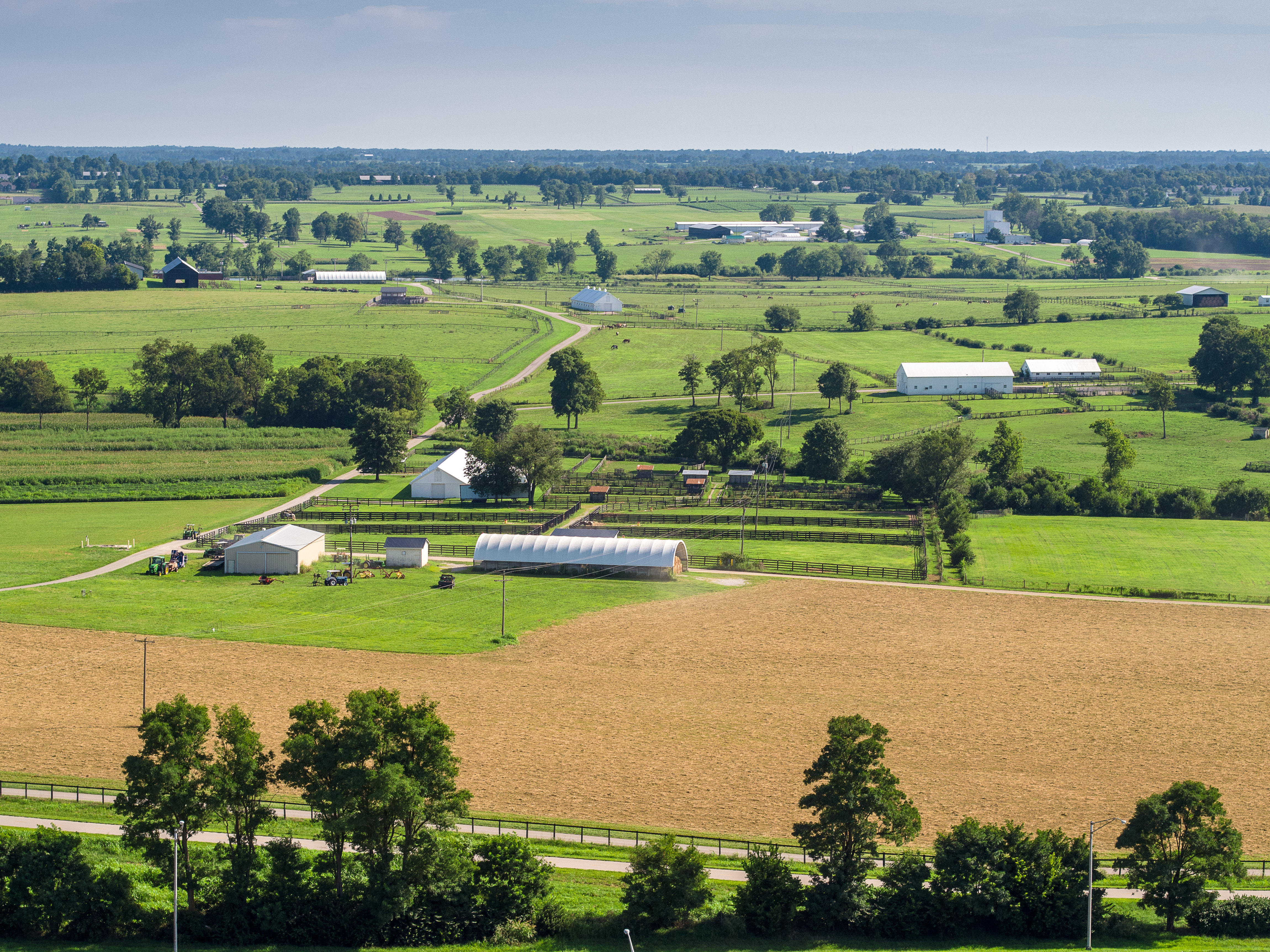Rising Kentucky land prices make renting attractive to producers
Rising Kentucky land prices make renting attractive to producers

Land prices have steadily risen across the Bluegrass state for much of the past decade. As a result, renting farmland has become a more attractive option than buying to many Kentucky producers.
Each year, the U.S Department of Agriculture releases a Land Values Summary that includes cropland values for land used to grow grain crops, vegetables and hay. According to the U.S. Department of Agriculture’s Land Values 2020 Summary, average Kentucky cropland prices were $4,400 per acre. This is an increase of $1,220 per acre from 2010, when cropland prices across the state averaged $3,180 per acre.
The rise in farmland prices is due to several factors, said Greg Halich, agricultural economist in the University of Kentucky College of Agriculture, Food and Environment. Many cities and towns, including Kentucky’s large metropolitan areas, Lexington, Louisville, Northern Kentucky and the traditional agricultural hubs of Bowling Green, Owensboro and Elizabethtown have seen substantial growth in the past decade. This has caused some farmland to be eyed by developers and investors. Also, a large segment of the population wants to live in rural areas, but not necessarily farm.
“Any land close to a city is being valued for development and, as a result, is overvalued for farmland purposes,” he said. “We see more farmers renting compared to buying farmland, because it is often cheaper to rent. Rental agreements tend to value the land based on its agricultural use rather than its development potential.”
Every few years, Halich surveys the state’s county agriculture and natural resource extension agents about the estimated cost of local rural land prices and cash rents. While these are only estimates, they give a good indication of rural land price trends across the state.
According to his 2018 survey, cropland values in the Midwest subregion of Kentucky, which includes Daviess, Warren and Christian counties, are the highest in the state with average prices estimated to be $6,100 per acre. The Bluegrass subregion, which includes Fayette and surrounding counties, had the second highest average cropland values. Agents estimated the average cropland prices there to be $5,200 per acre.
For hay ground purchases, the Bluegrass had the highest estimated land values at $4,100 per acre. The North Central subregion, which includes Jefferson and Northern Kentucky counties was second at $3,800 per acre.
Higher land prices make it difficult for producers to purchase land and harder for new farmers to enter the industry.
“Land, especially land being priced for development, is difficult to for producers to cash flow,” Halich said.
Cash rents are significantly cheaper than purchasing land. Average cash rent for cropland in the Midwest subregion of Kentucky was $210 per acre for the best ground and $150 for fair ground. In the Bluegrass, average cropland cash rent was $130 per acre for the best ground and $90 for fair ground.
Hay ground rentals were more expensive in the North Central area, with average cash rents ranging from $65 to $40 per acre. In the Bluegrass area, cash rents were estimated to range from $50 to $30 per acre. The Bluegrass hay ground cash rents were comparable to the North East, South East, South Central, Near West subregions.
Another reason that renting has become more attractive to the state’s producers is average cash rents have been declining across the state since 2014, when commodity prices dropped. From the 2015 to 2018 surveys, rent prices dropped between $10 to $15 per acre as profitability margins in grain crops grew slimmer.
With grain prices on the rise again this year, it may cause cash rents to increase.
“Now that commodity prices are rising again, producers may see an increase in cash rents in future contracts,” Halich said.
While commodity prices are on the rise, Halich cautions producers on overpaying for land.
“Producers need to consider where commodity prices are going to be in the long run before overbidding on farmland,” he said.
Agricultural Economics Extension

